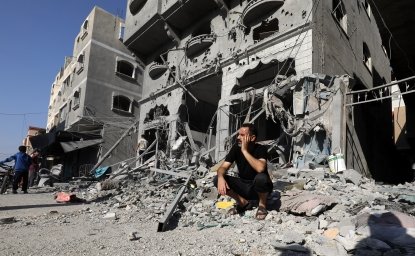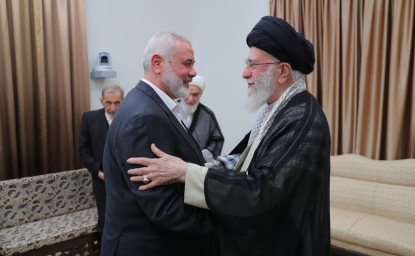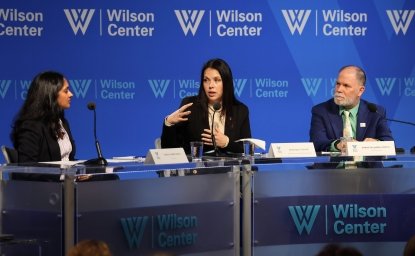By Cyana Chilton
The 22 nations of the Arab world—stretching from North Africa across the Levant into the Gulf—have witnessed unprecedented protests since December 2010. Angered by political oppression and economic inequities, tens of millions of people have taken to the streets. The demonstrations have in turn generated the greatest wave of political change since many countries gained independence from colonial rule.
In the first 10 months, the four leaders of Tunisia, Egypt, Libya and Yemen – who together ruled for a total of 129 years – were overthrown by popular uprisings. Others were under threat. No regime was immune from public outrage.
The end of autocratic rule was often ignominious.
Tunisian President Zine el Abidine Ben Ali was forced to flee the country after his own military said it would not put down the escalating protests to keep him in power in January 2011.
Libya’s Colonel Muammar Gaddafi, a flamboyant figure who ruled for 42 years, was cornered trying to escape through a sewer pipe, then killed by rebels in October 2011.
Yemen’s President Ali Abullah Saleh, still suffering serious injuries from a bomb inside his palace, stepped down after combined pressure from public protests, defectors from his army, and former Arab allies in February 2012.
Confined behind a courtroom cage, Egyptian President Hosni Mubarak was tried for corruption and culpability in the deaths of more than 800 protesters. He received a life sentence in June 2012.
Different Styles
The uprisings—initially dubbed the Arab Spring—reflected common problems: ruthless autocratic rule; economic inequities, mismanagement and corruption; and a baby boom generation coming of age that was educated but often unemployed or alienated. The protests, literately ignited by a Tunisia street vendor’s self-immolation, had a rippling effect in a region raw with longstanding outrage at the status quo.
For all the similarities, however, the crises played out differently, reflecting the diversity both within the region and inside individual countries.
Morocco’s king survived widespread protests by incorporating the opposition and addressing at least a few of its demands, including constitutional changes diffusing his own power. In November 2011, the moderate Islamist Justice and Development Party won a plurality of seats in parliament. Smaller sporadic protests continued, often over economic issues.
With help from Saudi troops, Bahrain’s king forcibly put down protests demanding the ouster of a prime minister who had been in place for 40 years. Demonstrations continued, however, and the sectarian division between majority Shiites and minority Sunnis only deepened over the next year.
In Syria, President Bashar Assad unleashed his vast security forces against the opposition, which was launched after schoolchildren in remote Daraa were jailed for writing anti-government graffiti in January 2011. The protests only spread, however. By mid-2012, Syria’s ruthless response had descended into civil war, with sectarian and ethnic overtones. It was the bloodiest and most protracted crisis.
Phase Two
The aftermath of regime change also differed from country to country.
Long one of the Arab world’s more stable countries, Tunisia designed a methodical process to elect a new government and draft a new constitution. Dozens of new political parties were formed. In October 2011, a moderate Islamist party won a plurality in the first democratic election. With two secular parties, the Justice and Development Party then formed a new government. Tunis struggled, however, to deal with deepening frustration over tough economic problems and occasional violence from Salafists who called for more religion in government. Tunisia was widely considered the most successful country in transition.
In contrast, the National Traditional Council in Libya had to deal with the chaotic aftermath of an eight-month conflict to oust Moammar Qaddafi. The first elections in July 2012 were largely peacefully. A secular party won the most votes. But the new government faced daunting challenges, which included disarming some 300 new militias and defusing tensions among rival tribes. The dangers were reflected in an attack on the U.S. Consulate in Benghazi, which killed the American ambassador and three other Americans in September 2012.
In Egypt, tensions repeatedly flared for 18 months over the powers of the military council that assumed control after Mubarak was ousted. The Supreme Council of the Armed Forces was initially pitted against the original revolutionaries and later against the new parliament and president. Islamist parties won more than 70 percent of the seats in parliament, while a member of the Muslim Brotherhood won the presidency in a 13-way race in m id-2012. The newly elected President Mohamed Morsi forced the top two generals from office in August 2012, but the military retained strong political and economic influence.
The Future
The emerging political order is still only in an early stage. More change—and more turmoil—almost certainly lie ahead.
But the trials and tribulations of the emerging new political order have also slowed the momentum of change. Many of the new players had little or no political experience; some had spent long years locked up by autocratic rulers. Most were learning how to rule complex but vulnerable states on-the-job.
Fragile new governments also inherited tough economic realities, at a time the world had limited means of bailing them or helping with job creation. People power protests also continued over other issues, especially labor and employment problems.
In each country, the process of writing new constitutions sparked feisty debates, especially over the role of Islamic law. Democracy exposed differences among the once united opposition. Actually defining the new order—and its rules—took more time than initially anticipated.
In other words, the chronology of change still has years to play out.
Cyana Chilton was a Scholar Intern at the Woodrow Wilson International Center for Scholars from June to August 2012.

The Islamists
Learn more about Hamas and how it relates to similarly aligned organizations throughout the region. Read more

Explore More
Browse Insights & Analysis
Israel Escalates Attacks in Gaza: What’s Next?

Israel Expands Operations on Multiple Fronts: Perspectives on the Conflict

